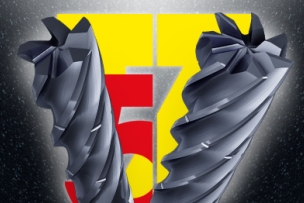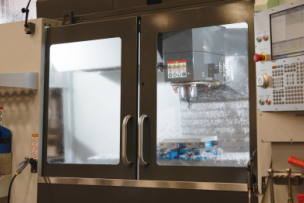Despite slow, large-scale adoption, advanced ceramics and ceramic matrix composites are finding a home in key aerospace and military applications.
Today’s ceramics have come a long, long way from the kilns of the ancient world. Ceramics go back 24,000 years. Their application, however, continues to evolve, especially for high-performance military and commercial jet engines, missiles, spacecraft, and in component parts and other applications including “high hardness for armor and wear components or high temperature resistance for refractory application,” according to Machine Design.
Whether as structural ceramics or as part of ceramic-matrix composites, the versatile material is helping manufacturers increase fuel efficiency in jet turbine engines while eliminating the need for as much cooling as traditional engines. GE Aviation, for example, claims its CMCs are two-thirds lighter than metal and carry a 20 percent higher temperature capability.
“[A]dvanced ceramics, which began to emerge following the discovery of the Bayer process for refining bauxite in 1887, have superior mechanical, thermal and electronic properties compared to traditional ceramics,” write Anthony Vicari and Anthony Schiavo of Lux Research, in an article for MachineDesign.
Several of the industry’s most sizable players have caught on to the benefits of ceramics in aerospace design, too. From General Electric to United Technologies, Safran, Boeing and Rolls Royce, more than 8,000 patents for aerospace design with ceramics have been granted since the early 1980s, according to American Machinist.
Advanced Ceramics & Ceramic Matrix Composites: Take the Good with the Bad
Despite the benefits, it doesn’t necessarily mean that ceramics are the be-all, end-all for aerospace design materials. As manufacturers have also found, ceramics have challenges in machining and in cost.
Ceramics are packed with a bounty of heat-insulating properties, making them an effective tool when paired with the high temperatures within aircraft turbines. They’re also extremely lightweight and noncorrosive, capable of withstanding contact with jet fuel and able to achieve faster speeds and expanded territory in space. But shaping and processing can be slow and arduous.
“[W]hen ceramics do fail, they do so suddenly and catastrophically, rather than gracefully like metals,” notes Lux Research. “This is not the only limitation: Structural ceramics have extremely high temperature resistance, which means they must be processed by slow and energy-intensive solid-state methods. In addition, high hardness after densification makes machining ceramics to shape a major challenge.”
To counter catastrophic failure, fiber reinforcement is used to help control “crack propagation through the matrix and bearing loads after the material begins to fail,” notes Lux Research, which allows CMCs to “fail gradually, more like the ductile failure of metal.”
“Due to the brittle nature, high hardness, resistance to creep and high strength, conventional machining methods such as turning, milling and drilling are difficult to perform well on advanced ceramics because of cracks, brittle fractures and edge chipping.”
Ceramics Can Be Difficult to Machine, But Not Impossible
Manufacturers know that using ceramics in aerospace design is a surefire way to lower the weight of their aircraft while using a durable material.
“The same properties that boost strength and temperature resistance also make machining more difficult,” writes Don Graham, manager of education and technical services at Seco Tools, in an article for Manufacturing Engineering. The difficulty occurs during the final machining or grinding period, Graham points out, where the surface integrity of the ceramics is compromised if cut incorrectly. What’s more, the chance of being compromised is further increased at a high material removal rate.
“Due to the brittle nature, high hardness, resistance to creep and high strength, conventional machining methods such as turning, milling and drilling are difficult to perform well on advanced ceramics because of cracks, brittle fractures and edge chipping,” explain Alexander Gorin and M. Mohan Reddy in their paper, Advanced Ceramics: Some Challenges and Solutions in Machining by Conventional Methods.
The difficulty of machining with ceramics can’t be eliminated entirely, but shops have found ways to mitigate the challenges with proper tool selection, according to Graham. Tools with sharp cutting edges and positive rakes will reduce cutting forces, while inserts with fine-grained substrates are a fine match for abrasive cutting conditions.
“Fiber reinforcement has largely overcome brittleness concerns, but machinability suffers due to the low thermal conductivity, high hardness and abrasiveness of CMCs,” writes Graham. “In addition to traditional machining methods, manufacturers are experimenting with alternate ways to process CMC parts such as waterjet, EDM, laser-assisted machining, grinding and the use of PCBN inserted tools.”
When Ceramics Are Machined Incorrectly, the Structure Will Lose Its Strength
If a piece of ceramics is machined incorrectly, the strength of the structure itself will diminish greatly. When sandwiched composite material is cut with ragged, uneven or deformed edges, the entire structure will lose a significant amount of rigidity.
“Sandwiched composite material that is cut unevenly or deformed loses its strength, much as creasing corrugated cardboard destroys its rigidity,” writes Graham. “For finish machining, shops must use high-speed end mills specifically designed for such sandwiched composites.”
When machining with ceramics in aerospace design, it’s crucial to avoid any type of bending or fraying. The solution, Graham points out, is to use a cutting machine with highly sharp edges and quick cutting speeds.
Ceramics Are Costly, But the Innovations Are Beneficial
With such an emphasis on a strong, efficient cut when machining ceramics, it’s no wonder that many shops have been known to contribute up to 80 percent of their overall expenses toward maintaining the integrity of their ceramics-based structures, according to the Gorin/Reddy paper. Naturally, this can present a problem when maintaining a budget or attempting to allocate funds to other aspects of the job.
“[D]esigners who want to make use of us CMCs’ superior mechanical properties will have to pay for the privilege,” notes Lux Research in the MachineDesign article. “The lowest cost graphite/carbon fiber CMCs command prices of about $30/lb for simple shapes, which increases dramatically with machining. Silicon carbide matrix/silicon carbide fiber CMCs for high-temperature applications demand high-purity fibers, with prices starting at over $4,000/lb, leading to preform prices of over $9,000/lb.”
Experts note ceramic adoption has been slow and often backed by subsidies and incentives from government funding, so to really take off, cost does need to come down. Lux Research points out that “technologies that reduce the cost of intermediates like fibers can unlock new markets, and processing advancements can make CMC parts more reliable, thus easing qualification.”
Has your shop machined with ceramics before? If so, what challenges did you and your team face? Let us know!




Talk to Us!
Interested in more information on ceramics
54Thank you for visiting Better MRO. We value your feedback and will take your
suggestion into consideration.
127Hi sir
Have a good day
We are professional silicon nitride powder manufacture in China,
the granules size is 0.8μm and 3μm to 8μm, α phase is ≧93,
metal property is Fe≦0.05、Al≦0.025、Ca≦0.02、O≦0.7、FSi≦0.3,
We also can customzise your need powder.
Best regards
40Leave a reply
Your email address will not be published. Required fields are marked *